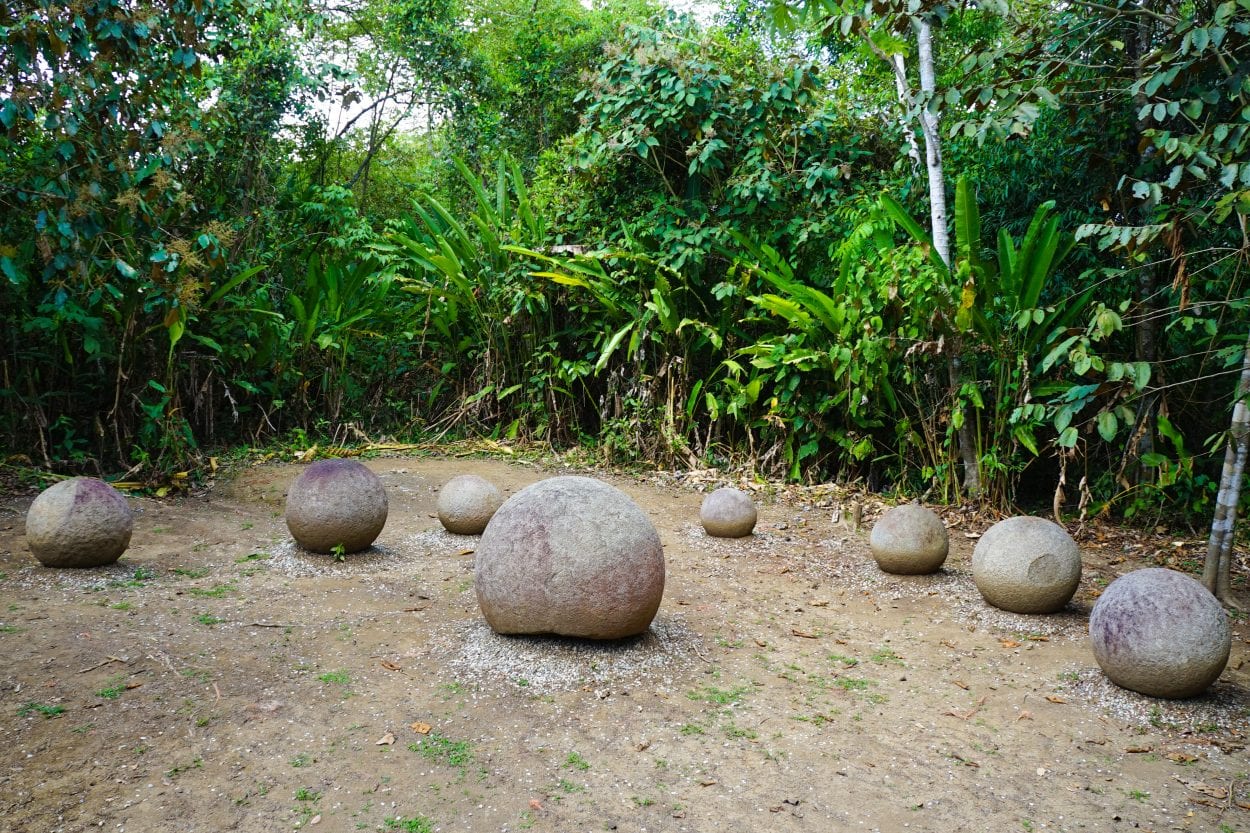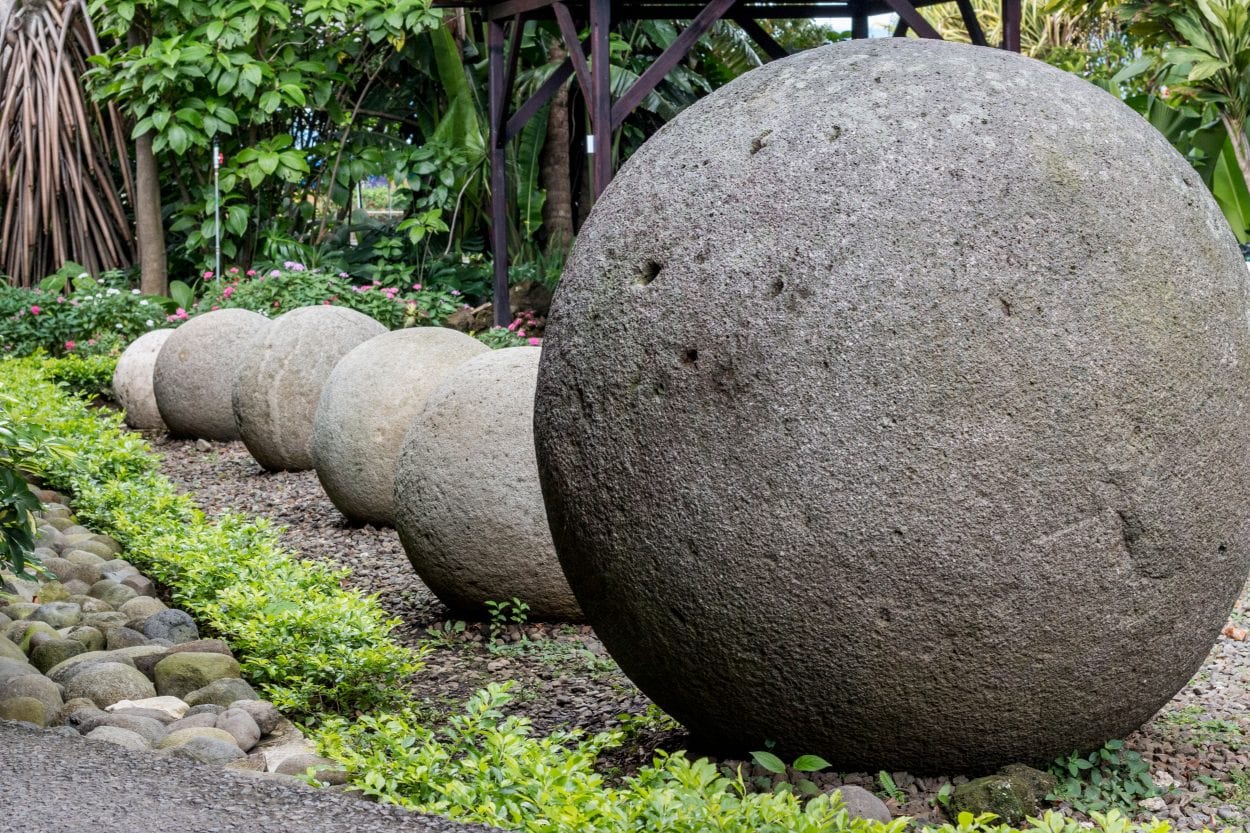On the small island of Isla del Caño and the Diquís Delta in Costa Rica are over 300 stone Petrospheres often referred to as the Diquís Spheres, that have been attributed to the now extinct Diquís culture.
The Diquís culture emerged in the Valley of the Rio Grande de Térraba, where they established complex social, economic, and political systems to govern their society.
Settlement of the region began during the Synancra period around 1,500 – 300 BC in the form of sedentary, small, and dispersed farming communities, which may have revolved around an egalitarian system with some levels of tribal organisation.
By the Aguas Buenas period between 300 BC – AD 800, the settlements developed a chiefdom structure that ruled over territorial divisions, and exchanged goods with neighbouring territories through a system of trading networks. During this period, the earliest examples of sculptured stone appeared that includes stone cylinders, “barrels,” spheres and depiction of characters.

Between AD 800 – 1500 during the Chiriquí Period, the settlements grew into large communities around the alluvial lands of the Térraba River and its main tributaries, constructing large structures using round-edged boulders, paved areas, burial sites, and circular or rectangular mounds with stone walls.
The Diquís reached an apex of cultural development during this period, with Diquís artisans creating elaborate ceramic, bone, and gold objects, and sculpturing stone spheres in important zones within the settlements. Stone spheres were also placed in alignments in public plazas, or along the approach to the dwellings of the ruling elite or chieftains.
The Diquís Spheres range in size from just a few centimetres, to over 2 metres in diameter, and are mostly made from gabbro, a phaneritic (coarse-grained) mafic intrusive igneous rock that is similar to basalt, with some examples of limestone and sandstone spheres. They were sculptured by hammering boulders into a crude spherical shape using denser rocks, and were then finished by polishing the stone’s surface by using sand.

With the arrival of the Spanish to the region in the sixteenth century AD, no mention was given in contemporary accounts by the Europeans explorers of large stone spheres in the communities they encountered.
By AD 1570, an expedition by Perafán de Ribera added to the mystery when he gave no indications in his reports of indigenous settlements, suggesting by this time that the large Diquís communities had either abandoned their homes, or had died off from reasons unknown (possibly through the infectious diseases introduced to the continent by the Spanish).
The spheres remained forgotten, until they were rediscovered in the 1930s by the United Fruit Company whilst clearing the jungle to make way for banana plantations.
Header Image Credit : Inspired By Maps – Shutterstock





